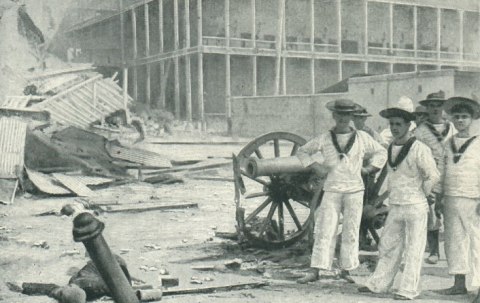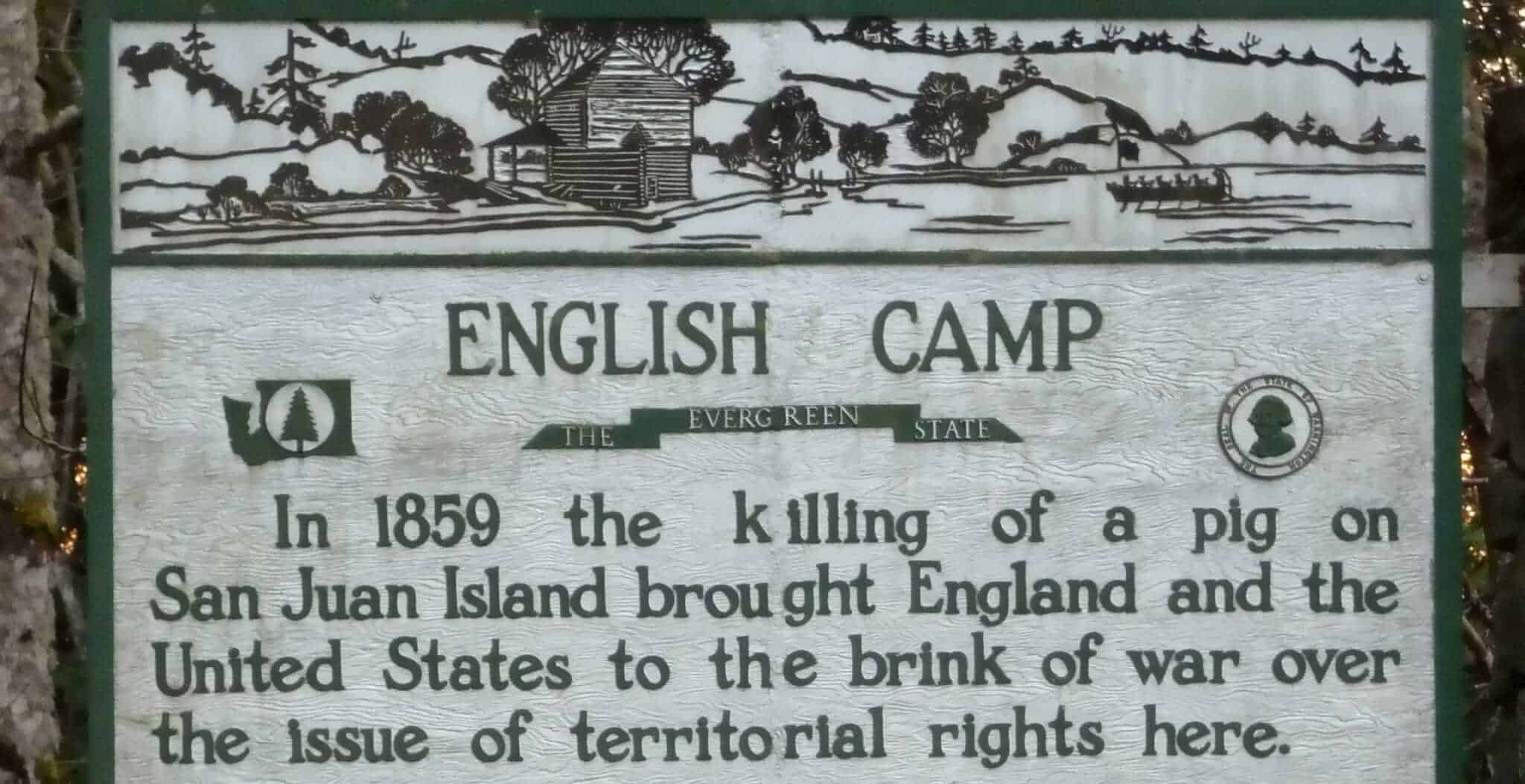The little known Anglo-Zanzibar War of 1896 is generally considered to be the shortest war in history, lasting for a grand total of 38 minutes.
The story begins with the signing of the Heligoland-Zanzibar treaty between Britain and Germany in 1890. This treaty effectively drew up spheres of influence between the imperial powers in East Africa; Zanzibar was ceded to British influence, whilst Germany was given control over mainland Tanzania.
With this new found influence, Britain declared Zanzibar a protectorate of the British Empire and moved to install their own ‘puppet’ Sultan to look after the region. Hamad bin Thuwaini, who had been a supporter of the British in the area, was given the position in 1893.
Build up to the conflict
 Hamad ruled over this relatively peaceful protectorate for just over 3 years until, on August 25, 1896, he died suddenly in his palace. Although the truth will never be fully known about the causes for his death, it is widely believed that his cousin, Khalid bin Barghash (pictured to the right), had him poisoned.
Hamad ruled over this relatively peaceful protectorate for just over 3 years until, on August 25, 1896, he died suddenly in his palace. Although the truth will never be fully known about the causes for his death, it is widely believed that his cousin, Khalid bin Barghash (pictured to the right), had him poisoned.
This belief is compounded by the fact that within a few hours of Hamad’s death, Khalid had already moved into the palace and assumed the position of Sultan, all without British approval.
Needless to say the local British diplomats were not at all happy with this turn of events, and the chief diplomat in the area, Basil Cave, quickly declared that Khalid should stand down. Khalid ignored these warnings and instead starting gathering his forces around the Palace.
These forces were surprisingly well armed, although it’s worth noting that quite a few of their guns and cannons were actually diplomatic gifts that had been presented to the former Sultan over the years! By the end of 25th August, Khalid had his palace secured with almost 3,000 men, several artillery guns and even a modestly armed Royal Yacht in the nearby harbour.
 At the same time, the British already had two warships anchored in the harbour, the HMS Philomel and the HMS Rush, and troops were quickly being sent ashore to protect the British Consulate and to keep the local population from rioting. Cave (pictured to the right) also requested backup from another nearby British ship, the HMS Sparrow, which entered the harbour on the evening of the 25th August.
At the same time, the British already had two warships anchored in the harbour, the HMS Philomel and the HMS Rush, and troops were quickly being sent ashore to protect the British Consulate and to keep the local population from rioting. Cave (pictured to the right) also requested backup from another nearby British ship, the HMS Sparrow, which entered the harbour on the evening of the 25th August.
Even though Cave had a significant armed presence in the harbour, he knew that he did not have the authority to open hostilities without express approval of the British government. To prepare for all eventualities, he sent a telegram to the Foreign Office that evening stating: “Are we authorised in the event of all attempts at a peaceful solution proving useless, to fire on the Palace from the men-of-war?” Whilst waiting for a reply from Whitehall, Cave continued issuing ultimatums to Khalid but to no avail.
The next day, two more British warships entered the harbour, the HMS Racoon and the HMS St George, the latter carrying Rear-Admiral Harry Rawson, commander of the British fleet in the area At the same time, Cave had received a telegraph from Whitehall stating:
“You are authorised to adopt whatever measures you may consider necessary, and will be supported in your action by Her Majesty’s Government. Do not, however, attempt to take any action which you are not certain of being able to accomplish successfully.”

Zanzibar Palace in the late 1800’s
The final ultimatum to Khalid was issued on the 26th August, demanding that he leave the palace by 9am the next day. That night, Cave also demanded that all non-military boats leave the harbour in preparation for war.
At 8am the next morning, only one hour before the ultimatum expired, Khalid sent a reply to Cave stating:
“We have no intention of hauling down our flag and we do not believe you would open fire on us.”
Cave replied in true 19th century British diplomatic style, stating that he had no desire to fire upon the palace “but unless you do as you are told, we shall certainly do so.”
The conflict
That was the last Cave heard from Khalid, and at 9am the order was given for the British ships in the harbour to begin bombarding the palace. By 09:02 the majority of Khalid’s artillery had been destroyed, and the palaces wooden structure had started to collapse with 3,000 defenders inside. It is also around this time, two minutes after the bombardment started, that Khalid is said to have escaped through a back exit of the palace, leaving his servants and fighters to defend the palace alone.
By 09:40 the shelling had ceased, the Sultan’s flag pulled down, and the shortest war in history had officially ended after only 38 minutes.

Zanzibar Palace after the bombardment
For such a short war, the casualty rate was surprisingly high with over 500 of Khalid’s fighters killed or wounded, mainly due to the high explosive shells exploding on the palace’s flimsy structure. One British petty officer was also severely injured, but later recovered in hospital.

British marines standing next to a captured artillery gun
With Khalid out of the way, the UK was free to place the pro-British Sultan Hamud on the throne of Zanzibar, and he ruled on behalf of Her Majesty’s Government for the next six years.
As for Khalid, he managed to escape with a small group of loyal followers to the local German Consulate. Despite repeated calls from the British for his extradition, he was smuggled out of the country on October 2nd by the German navy and taken to modern day Tanzania. It was not until British forces invaded East Africa in 1916 that Khalid was finally captured and subsequently taken to Saint Helena for exile. After ‘serving time’, he was later allowed to return to East Africa where he died in 1927.
Published: 1st March 2015.











